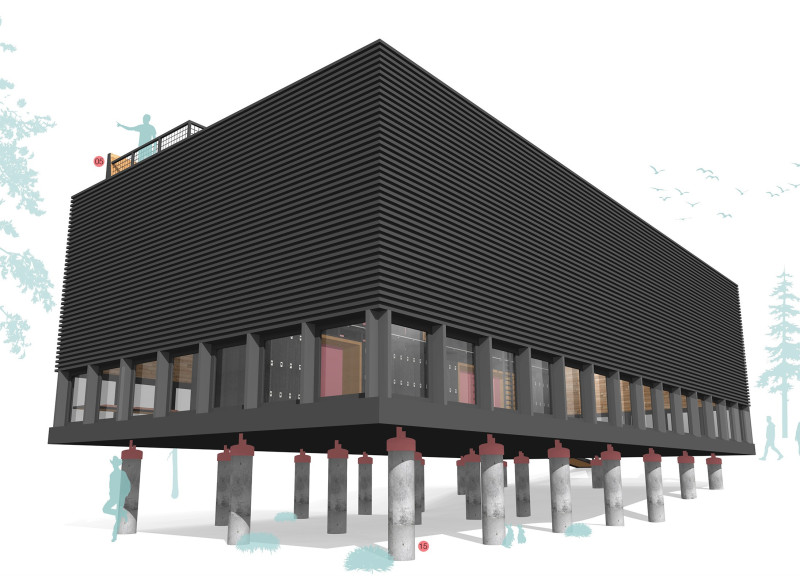5 key facts about this project
The project under analysis embodies a modern architectural design that addresses both functional and aesthetic requirements. Located in [insert geographical location], the structure serves as [insert function, e.g., a community center, educational facility, residential complex]. It represents a harmonious integration of form and function, delivering spaces designed for usability while also fostering an engaging environment.
The design features a combination of materials, including [list materials such as reinforced concrete, glass, steel, etc.], which contribute to its durability and visual appeal. The façade incorporates large glass panels that promote transparency and connectivity to the surroundings, allowing natural light to penetrate deep into the interior spaces. This thoughtful consideration of light enhances the user experience while also reducing reliance on artificial lighting.
A key aspect of the design is its spatial organization. The layout is intentionally crafted to differentiate between public and private areas. Public spaces are designed to be inviting and accessible, promoting interaction among users. Meanwhile, private zones offer seclusion and comfort, catering to the individual needs of occupants. The flow between these spaces is executed through strategically placed corridors and communal areas, ensuring ease of movement and visual coherence.
This project stands apart from similar developments through its unique approach to sustainability and integration with the environment. Rainwater harvesting systems are incorporated into the design, allowing for efficient water management and reducing the building's ecological footprint. Additionally, green roofing and landscaping elements have been integrated to enhance biodiversity while providing recreational opportunities for users.
Architectural details further enhance the project’s uniqueness. The use of modular construction techniques streamlines the building process and reduces waste. Interior design elements, such as [insert details like custom furnishings or artworks], reflect local culture and contribute to the building's identity. Furthermore, the incorporation of flexible spaces allows for adaptive use, catering to a variety of functions over time.
The innovative design strategies employed in this project make it a relevant case study in contemporary architecture. The architecture not only fulfills its intended function but also contributes positively to the surrounding community and environment. For those interested in delving deeper into the various architectural plans, sections, and design elements utilized, a detailed exploration of this project presentation is encouraged. Understanding the architectural ideas and execution will provide valuable insights into modern design practices and their impact on community living.





















































